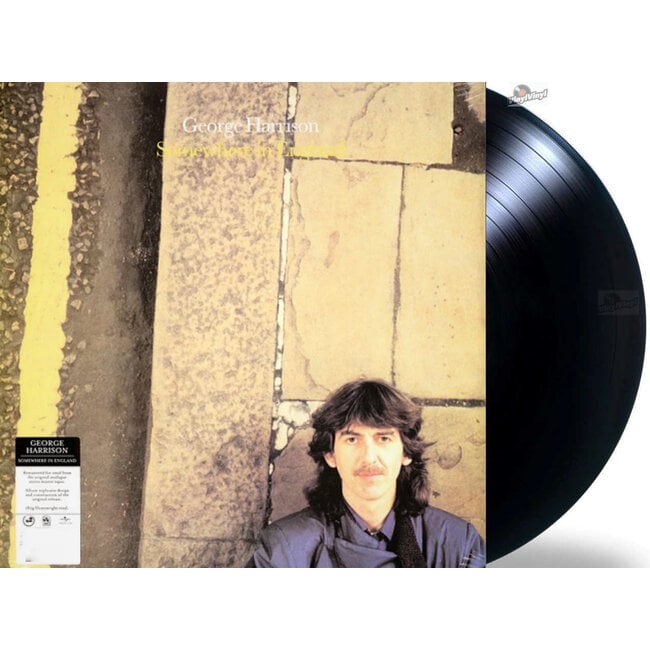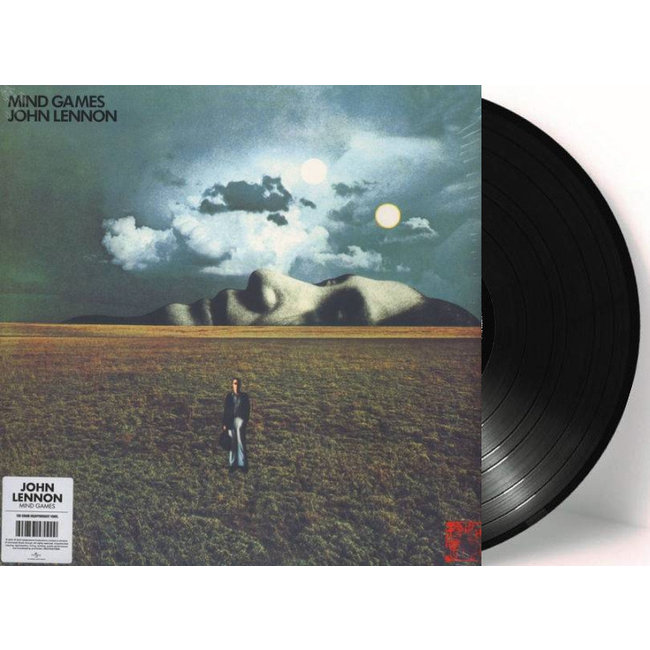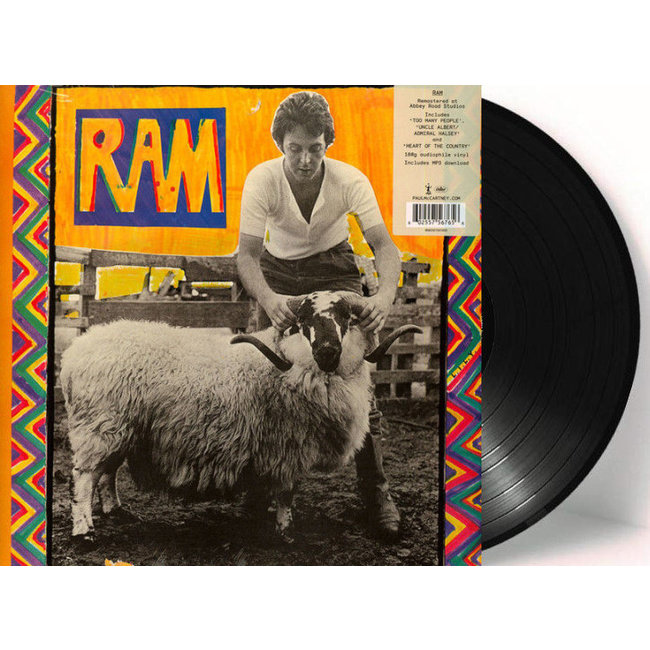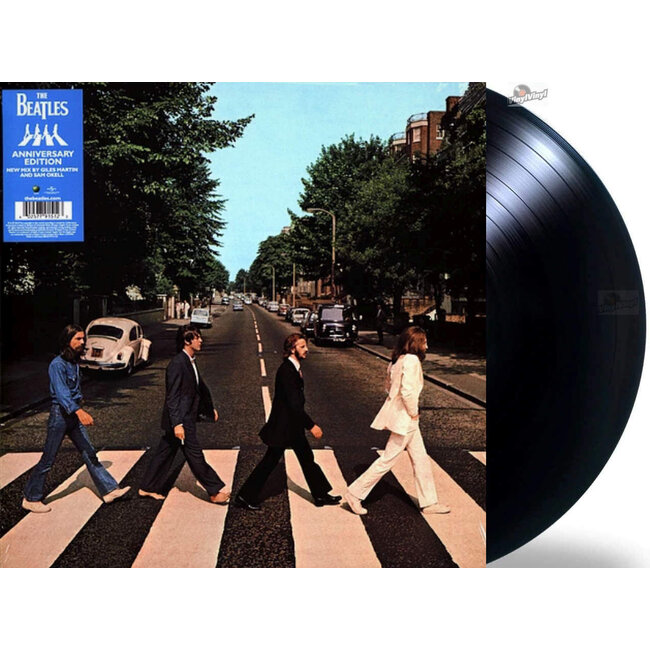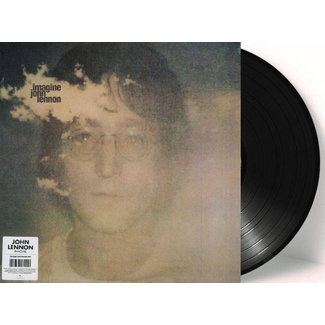John Lennon Rock 'N' Roll ( 180g vinyl LP )
(1975) 2015 EU remaster ( 180g vinyl LP ) The seeds for the making of this record go back to 1969 and a song John Lennon composed, for the Beatles’ Abbey Road album. On "Come Together," John sings, “Here come old flattop,” a line that was originally in C Lees meer..
Voor 15.00u besteld?
Dan wordt je bestelling vandaag verzondenEen echte winkel
Kom ook eens bij ons langs in Den HaagKlantenservice?
Bel 070 - 36 32 777 voor vragen, tips of advies
Productomschrijving
Release date: 21-08-2015 (originally released in 1975)
2015 EU repressed on 180g Vinyl LP-Remastered in 2010 from the Original Analogue Tapes by Yoko Ono & Team of Engineers from Abbey Road Studios in London and Avatar Studios in New York
Cut from the 24bit/96k HD Digital Transfers by Sean Magee at the World Renowned Abbey Road Studios.
The seeds for the making of this record go back to 1969 and a song John Lennon composed, for the Beatles’ Abbey Road album. On "Come Together," John sings, “Here come old flattop,” a line that was originally in Chuck Berry’s 1956 hit, "You Can’t Catch Me." Its use encouraged music publisher Morris Levy to bring a lawsuit for copyright infringement against John. Before a judge could hear the case it was settled out of court, with an agreement, according to an announcement by Levy, that John had to “record three songs by Big Seven [Levy’s company] publishers on his next album.” As a result John decided to record this album of rock ‘n’ roll covers.
John began work on the record during the period of his ‘Lost Weekend’ in Los Angeles, a period that followed the release of Mind Games. The sessions proved to be somewhat eventful, due in no small measure to Phil Spector having been drafted in to produce the album and to help pick some of the songs. The songs that were chosen are all about Lennon’s musical roots, dating from his pre-Beatles days through to the band’s residencies at Hamburg’s notorious clubs and the gigs that they played in and around Liverpool before they were famous.
The Rock ‘n’ Roll sessions began in October 1973 at A&M Studios in Los Angeles and proved to be a challenge for everyone involved. Stories of Spector’s behavior in the studio have become the stuff of legend. Among those, and what at times seemed like a cast of thousands, that played on the tracks recorded in Los Angeles were guitarists, Jose Feliciano, Steve Cropper, and Larry Carlton; keyboard players, Leon Russell and Dr John, saxophonists, Bobby Keys, Jim Horn and Plas Johnson along with drummers, Jim Keltner, Jim Gordon and Hal Blaine. It gives some idea as to the number of musicians who came by the studio and got involved in what were the loosest recording sessions of John’s career.
Eventually the whole thing descended into total chaos, culminating in Spector disappearing with the tapes. In March 1974, the mercurial producer had a car accident that put him in a coma and all chances of recovering the tapes seemed to have been lost. John headed back to New York City in mid 1974 without the master tapes of what he had recorded in Los Angeles and so instead of continuing to work on the album of covers he began recording Walls and Bridges instead.
Eventually the LA master tapes were recovered and in October 1974, practically a year to the day after work had originally begun on Rock ‘n’ Roll, John went back into the Record Plant in New York with the musicians that had worked on Walls and Bridges. These sessions were better organized, and the remaining tracks took just five days to record, with John feeling a connection with the music he loved so much.
Throughout this album there is a sense a history being played out. The first of Little Richard’s hits was, "Rip it Up" in December 1956 and on the b-side was "Ready Teddy"; both of which are included on the Rock ‘n’ Roll album, along with "Slipin’ and Slidin" another of Richard’s classic hits. Other tracks that John covers include Fats Domino’s "Ain’t That A Shame" – the New Orleans’s pianist’s third British hit in early 1957. Gene Vincent’s "Be-Bop-A-Lula," a song that went in and out of the UK chart three times in the summer of 1956. Fellow New Orleans performer Lee Dorsey’s "Ya Ya," a song co-written by Morris Levy, that had been included on Walls and Bridges has a full run through on this album.
Ben E King’s "Stand By Me" was not released until early 1961, at a time when the Beatles were making waves in Hamburg, but it became a favorite of the band. As was the singer, Sam Cooke who was admired by just about every musician that heard his mellifluous tones – John was no exception. The album is completed with tracks from Buddy Holly, Larry Williams, Lloyd Price and Bobby Freeman. What immediately grabs you, right from the opening bars of "Be-Bop’A’Lula" is how much respect John has for these songs. This is anything but a ‘covers’ record. Every song is treated with reverence, with each and everyone having something of John in it.
Of the tracks that were done in Los Angeles, four made it onto the Rock ‘n’ Roll album – "Bony Moronie," "Just Because" and two Chuck Berry songs, "Sweet Little Sixteen" and ironically the catalyst for the album, "You Can’t Catch Me." Everything else was recorded and mixed in New York with John taking over as the sole producer.
Tracks:
A1. Be-Bop-A-Lula
A2. Stand by Me
A3. Medley: Rip It Up/Ready Teddy
A4. You Can't Catch Me
A5. Ain't That a Shame
A6. Do You Want to Dance?
A7. Sweet Little Sixteen
B1. Slippin' and Slidin'
B1. Peggy Sue
B3. Medley: Bring It on Home to Me/Send Me Some Lovin'
B4. Bony Maronie
B5. Ya Ya
B6. Just Because
Reviews
Specifications
Rock 'N' Roll ( 180g vinyl LP )
0 beoordelingenBeoordeel John Lennon Rock 'N' Roll ( 180g vinyl LP )
(1975) 2015 EU remaster ( 180g vinyl LP ) The seeds for the making of this record go back to 1969 a..












